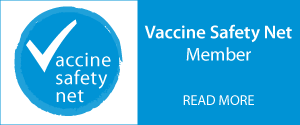The Coalition for Epidemic Preparedness Innovations (CEPI) mission is to stimulate and accelerate the development of vaccines against emerging infectious diseases and enable access to these vaccines for people during outbreaks (https://cepi.net/). To achieve its mission CEPI is supporting the development of a wide range of vaccine candidates and platform technologies against prioritized targets.
CEPIs multipronged approach requires harmonization of safety assessment across platforms and targets to allow for meaningful analysis and interpretation of the safety profiles of CEPI vaccines. CEPI has partnered with the Brighton Collaboration in funding the Safety Platform for Emergency vACcines (SPEAC) project (in 2019 and expanded in 2022) through the Task Force for Global Health.
SPEAC aims to support the emerging CEPI portfolio by creating capacity and solutions for harmonized safety assessment of CEPI vaccines. Key Work Packages (WP) and Leads are:
WP1, DSMB Support and Meta-DSMB (Steve Black/Corry Dekker), will optimize vaccine safety data review for CEPI funded trials, the provision of SPEAC liaison observer members, the functioning of a highly experienced Meta DSMB, the provision of potential DSMB members from target countries, and the provision of training to potential new DSMB members in different geographical regions.
WP2, Standards and Tools (Barb Law), will review and aggregate the ever-increasing literature, summarize, and create novel specialized knowledge tools such as CEPI target disease landscape analyses, AESI case definitions and associated companion guides, Automated Brighton Classification tools, training resources, data collection forms, algorithms for assessing level of certainty, background rates, and ICD 9/10, SNOMED and MedDRA codes.
WP3, BRAVATO Vaccine Safety Templates (Marc Gurwith), will summarize available information for each novel vaccine into standardized benefit-risk templates. We will make the templates electronically available and allow for continuous updates. Additionally, applicability/use of safety data from developed to less developed countries and the identification of safety data that can and cannot be implied from clinical trials from one region to another will be provided. A separate optional module will allow structured benefit-risk analyses and presentation for a variety of new and existing vaccines/technology platforms; this module will help meet regulatory requirements.
WP4, Digital Transformation (Dale Nordenberg). The “information kernel” in various SPEAC products will be transformed from the current MS Word or PDF version to standards-based structured data for efficient electronic data exchange across the vaccine developers, regulators, public health agencies, and other stakeholders. For specific information products, FIND compliant tools provide user-friendly, efficient access to SPEAC products and services. Examples include data collection forms that stakeholders may import in their e-Case Report Form (CRF), and an Automated Brighton Classification (ABC) tool that can be incorporated to automatically assess the level of certainty for a case definition. Moreover, to oversee product safety of many different vaccines across platforms, the Meta-DSMB needs to be supported by a system that allows for reporting and aggregation of safety issues, across different vaccine platforms. The SPEAC Safety Services Portal will be formed by both a backend (where tools will be developed and fed by the SPEAC team and consultants) and a frontend (that will allow external users to interact with some of the tools and export data). This platform will also support effective engagement of members of the global vaccine safety community leaders in order to promote collaboration, innovation, and improved operations. Digital transformation for vaccine safety will be supported by workforce development through WP4 educational and training programs.
WP5, Special Populations (Flor Munoz). We have observed again during the COVID-19 pandemic that special populations are not included in initial trials. Three special population workstreams, related to children and adolescents, pregnant and lactating women, and immunocompromised and medically at-risk hosts will be addressed. Specialists in each area of expertise will be engaged and support the process of vaccine development, evaluation, and implementation by providing population level expertise, specific guidance, and tool development such as template protocols, informed consent documents, communication tools, key characteristics of each of the special population groups, and unique aspects relevant to disease burden and vaccine research and implementation.
WP6, Support for Vaccine Active Safety Surveillance (Andy Stergachis) at CEPI Research Preparedness Network Sites will develop strategies to strengthen sustainability of such activities, critical for ongoing benefit-risk evaluation.
WP7, Quality Assurance and Continuous Improvement (Wan-Ting Huang), will evaluate quality and uptake of SPEAC products and propose continuous improvement plans for SPEAC standards and tools.
WP8, Project Management (WeDO) and WP9, Scientific Coordination (Bob Chen/Miriam Sturkenboom), through a well-established governance structure and engagement with CEPI and their funded developers, will provide the overall scientific direction, drive innovation and effective coordination and management of the larger, longer, and more complex SPEAC 2.0 project. Additionally, these WPs will create strategic partnerships and develop and maintain communication channels with the stakeholders, while ensuring proper dissemination, implementation, and impact of the project outputs.
WP10, Preparedness for AESI X/Disease X (Bob Chen/Miriam Sturkenboom). Much damage to public health can result from delayed response to either an emerging Disease X or (with the introduction of any new vaccine to larger populations,) new AESI X. SPEAC 2.0 will use these contingency resources earlier to help mitigate this risk by addressing safety issues that may arise during the development of candidate vaccines vs. Disease X, ensuring coordination of activities across WPs and changes in the workplan as well as administrative needs with CEPI.
WP11*, Pathophysiology and Adversomics via International Network of Special Immunization Service(Karina Top/Bob Chen), will inform safety evaluation and risk-benefit assessment of new vaccines for emerging pathogens through establishing experts in vaccine safety evaluation, partnering with experts in LMICs to develop processes and capacity for case finding and evaluation, collaborating with WP2 on developing and implementing case definitions and protocols for data and sample collection, and analyzing samples from AESI cases and controls.
(*Funded directly by CEPI to Dahlousie University, Canada)
The expertise and materials of the Brighton Collaboration are essential for monitoring the safety of CEPI vaccines.



